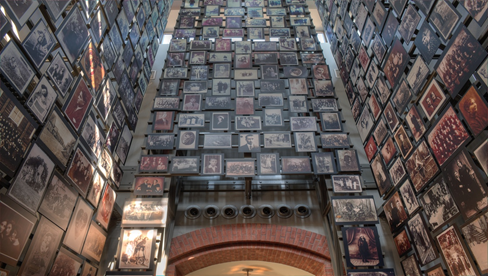
History museums that tell their story along a chronological path seem to capture their visitors’ engaged attention for longer periods of time than any other type of museum. Whether the subject is military history, astronomical history, natural history, Holocaust history, the history of a terrorist attack or the history of a people or a nation, audiences are mesmerized and become immersed in the story being told.
The time range for these histories vary wildly from a day to billions of years. The 9/11 Museum, for example, guides the visitor through one of the worst days in U.S. history from sunrise on a beautiful New York City morning through the devastating events of that day and it incorporates a memorial to its victims. At the other extreme, the Cosmic Pathway in the Rose Center at the American Museum of Natural History explores the history of the universe starting with the smallest particle imaginable and its incredible expansion over the first second of time through the current status of the universe today more than 13 billion years later.
Another exhibition at the AMNH in its Hall of Human Origins depicts the history of humans starting with our early ancestors some six million years ago to modern humans who made their appearance an estimated 150-200,000 years ago and spread throughout our planet. The National Museum of the American People picks up that story approximately 20,000 years ago when the first modern humans are believed to have come to the Western Hemisphere.
The NMAP will tell its story along four chronological paths telling about all of the ethnic, nationality and racial groups coming to this land and nation:
- The first chapter is from the first peoples in the Western Hemisphere to the first permanent settlement in what became the United States at Jamestown, VA in 1607 and includes first contact between natives and Europeans.
- The Museum’s second chapter from 1607 to 1820 depicts Western Europeans coming, slavery, establishment of the nation and its westward expansion via the Louisiana Purchase taking in new peoples.
- The third chapter from 1820 to 1924 covers the nation’s major century of expansion to the Pacific including Alaska, Hawaii and Puerto Rico. The nation becomes the destination for millions of immigrants from throughout Europe and Asia and incorporates Hispanic lands in the Southwest.
- The final chapter takes us from 1924 through today focusing on refugees and immigrants arriving in the U.S. from every part of the world.
Other American chronological history museums focus on other events or peoples that the National Museum of the American People will also explore. The Museum of the American Revolution in Philadelphia takes place along a 29-year path starting with the roots of the revolution from 1760 to 1776, the war until its end at Yorktown in 1781, and the struggle to create a lasting government based on principles of democracy, freedom and liberty that culminates with the U.S. Constitution in 1789.
The National Museum of African American History and Culture tells its story over a 500-year path starting with the beginning of slavery by Europeans in Africa in the 1500s through slavery, Jim Crow and the civil rights movement to achievements of African Americans through today.
While the Smithsonian’s National Museum of American History doesn’t have a central chronological exhibition depicting American history, it recently announced plans to open a permanent Latino exhibition space in 2021 where it would tell the story of Hispanic and Latino history in the United States. The NMAP will also be telling these stories through all four of its chapters in the context of all Americans coming or being incorporated into the United States.
The U.S. Holocaust Memorial Museum was one of the first major American museums to devote a permanent exhibition telling a story along a path for visitors. Its story is along a 14-year history of the Holocaust from 1932 until its end in 1945 and includes the American connection to those events.
When the Holocaust Museum was built, studies showed that the average visit to museums, whether an art, history or science museum, lasted about an hour and a half. The USHMM found that the average visit through its permanent exhibition was three hours and many visitors spent five hours going through its story. The National Museum of African American History and Culture which is less than three years old has also found that many visitors need well over three hours to explore its permanent exhibition.
The National Museum of the American People also expects visitors to become immersed in its story about the making of the American People. For all Americans, it is their story.
This blog is about the proposed National Museum of the American People which is about the making of the American People. The blog will be reporting regularly on a host of NMAP topics, American ethnic group histories, related museums, scholarship centered on the museum’s focus, relevant census and other demographic data, and pertinent political issues. The museum is a work in progress and we welcome thoughtful suggestions.
Sam Eskenazi, Director, Coalition for the National Museum of the American People
